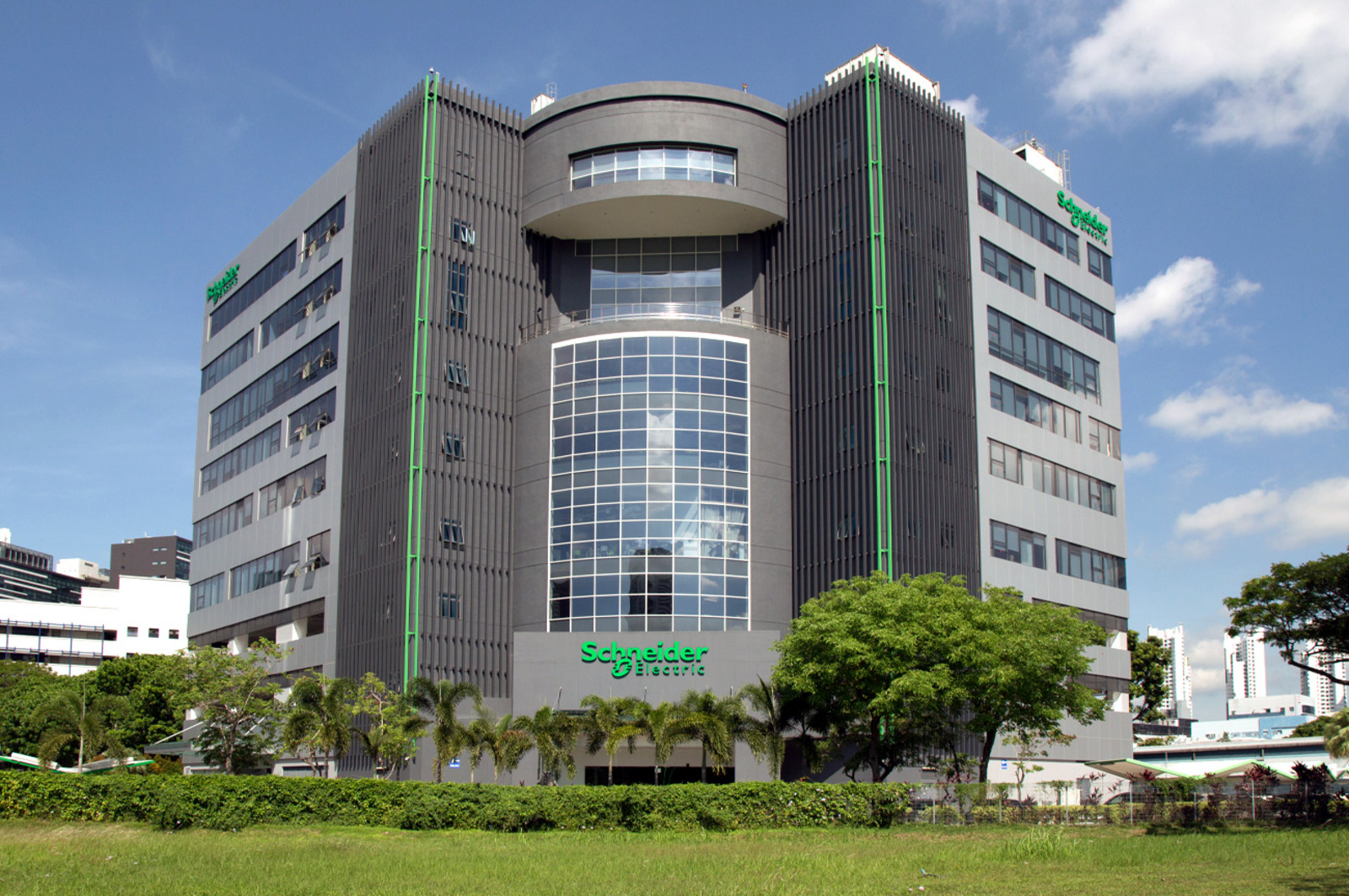
In this article, William LONGIN (Sorbonne School of Economics, Master in Money Banking Finance Insurance, 2024-2026) discusses his experience as a Finance intern at Schneider Electric Singapore.
About Schneider Electric
Schneider Electric is a French multinational company (MNC) that is specialized in energy management and automation solutions. It was founded in 1836 during the Industrial Revolution in Europe. Its headquarters are in Rueil-Malmaison (France). Schneider Electric develops technologies that help businesses and households optimize energy use. The relevance of the activities of Schneider Electric has increased with the increasing demand for electrical power with the surge in data center and electrical power demand. The company operates in more than 100 countries and is one of the global leaders in electrical equipment and industrial solutions.
Schneider Electric Singapore
After a year of study at Nanyang Business School in Singapore, I joined Schneider Electric’s Singapore office as an intern. As a French citizen, I obtained a Work Holiday Pass (WHP), which allowed me to remain in Singapore for six months. The building itself showcases Schneider Electric’s expertise in energy management and automation, being partly powered by renewable energy and retrofitted with energy-efficient systems.
Schneider Electric Singapore Kallang offices also called “Kallang Pulse”

Source: Schneider Electric Singapore.
Global Supply Chain Finance Manufacturing
Quarterly reporting
During my 6 months internship I integrated the Finance team of the Global Supply Chain (GSC) division of Schneider Electric Singapore. The Finance division plays a central role in the creation of financial forecasts and accurate financial reporting for both internal and external purposes. The primary goal in quarterly reporting is to provide reliable financial data that reflects the performance of operations across regions and business units. The quarterly results are the fruit of the cooperation between the Finance Business Partners (FBPs) and accounting teams of Schneider Electric in several East Asian countries (Thailand, Vietnam, Indonesia, etc.). Finance Business Partners (FBPs) play a coordination role in the process of quarterly reporting and ensure the accuracy of financial statements with regard to manufacturing realities.
Standardization of financial reporting across East Asia
As an intern at Schneider Electric Singapore I contributed to the standardization of financial reporting across East Asia (EA). The process of standardization of financial reporting is key to make comparable metrics. The harmonization of cost centers reduces errors and improves efficiency and was done through direct communication with Finance Business Partners and accountants. Over the course of my internship cost centers were standardized meaning that entities would report similar type costs under the same line item (code number). Overall the work of the Finance team contributed to support more accurate decision-making.
In factory missions
The Schneider Electric Singapore GSC Finance team works closely with the factories/plants of the region. During my internship I had the opportunity to visit plants in Singapore and Indonesia. The proximity with employees on site allowed for more accurate tracking of material flows and stock levels, reducing discrepancies between financial records and actual usage. By monitoring inventories closely, the team maintained a balance between cost efficiency and operational continuity. The finance team places strong value on visits and human contact as part of its role within the Global Supply Chain.
Excel methods
The Finance team relied on advanced Excel techniques. During my internship, I used Power Query to build dynamic spreadsheets that cleaned and transformed large datasets and presented information for easy comparisons. Schneider Electric leverages SAP databases, so I also extracted internal data using Data Format Layout (DFL) to support analysis.
Transversal role
In addition to my core finance responsibilities, I had the chance to explore other parts of the global supply chain, particularly Procurement. In Procurement, the team validates supplier cost structures and reconciles material prices against assumptions. One of my missions was to perform some data analysis on a very large data set. My analysis gave the tools to Procurement to negotiate more effectively with suppliers.
Nomenclature
Purchase Orders (POs): Formal documents issued by a buyer to a supplier to authorize a purchase, specifying items, quantities, and agreed prices. The Global Supply Chain (GSC) finance team is sometimes brought to analyse samples of them.
Consolidated Standard Costing (CSC): A unified costing method that standardizes cost structures across plants or regions, enabling consistent financial comparisons.
Base vs. Variable Costs:
- Base costs (fixed costs) remain stable regardless of production volume (e.g., rent, salaries, depreciation).
- Variable costs fluctuate with activity or output (e.g., raw materials, utilities, logistics).
Steps of the Purchase Process: Typically include requisition, approval, purchase order issuance, supplier confirmation, delivery, and invoice/payment processing.
Lean manufacturing
Beyond financial forecasting and reporting, the GSC Finance team in Singapore has adopted a systematic philosophy when working on projects. My mentor was an advocate of Six Sigma Lean Manufacturing principles. These principles include reducing variability and defects, relying on data-driven analysis and structured steps such as DMAIC (Define, Measure, Analyze, Improve, Control). The application of lean manufacturing principles increased the efficiency of processes. During my internship I passed some internal training and obtained my green belt of six sigma. An example of six sigma lean manufacturing was a project to create an app that allows to track inventories and makes auditing more reliable and efficient.
Conclusion
My internship at Schneider Electric Singapore was more than a professional experience — it was a learning journey. I discovered how finance is not only about producing figures but also about supporting operations and connecting people across cultures.
Why should you be interested in this post?
If you are curious about how finance operates at the crossroads of global supply chains, this post offers a concrete view from inside Schneider Electric’s East Asia hub. Beyond numbers, it shows how financial teams play a transversal role in harmonizing reporting across countries.
About the author
The article was written in September 2025 by William LONGIN (Sorbonne School of Economics, Master in Money Banking Finance Insurance, 2024-2026).
▶ Read all articles by William LONGIN.
